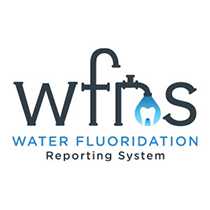Oral Health Data Tools
Oral health data systems monitor the prevalence of oral diseases and the factors influencing oral health, such as risky or protective behaviors, the availability of preventive interventions and utilization of preventive services. The systems bring together existing data from multiple national and state sources and present the data in useful and accessible formats for the broad community interested in promoting oral health.
Open Data Tools
-
Oral Health Data

The Oral Health Data website contains data for indicators from the National Oral Health Surveillance System (NOHSS), Water Fluoridation Statistics biennial reports, and the annual Synopses of State Oral Health Programs. The NOHSS is based on a set of surveillance indicators developed by consensus among CDC, the Council of State and Territorial Epidemiologists (CSTE), and the Association of State and Territorial Dental Directors (ASTDD). New data are added as they become available.
-

My Water’s Fluoride
Find information about your local water system’s fluoridation status. Currently available only for states that voluntarily participate in the Water Fluoridation Reporting System (WFRS). -

Water Fluoridation Reporting System (WFRS)
A water fluoridation monitoring tool for state and tribal water fluoridation program managers and oral health program directors or managers. This system requires special authorization for access. WFRS is the data source for the annual fluoridation information in the National Oral Health Surveillance System.
Related Links
- My Water’s Fluoride, NOHSS, Oral Health Data, the Synopses, and WFRS were developed and are maintained through a collaborative effort with the Association of State and Territorial Dental Directors (ASTDD), an affiliate organization of the Association of State and Territorial Health Officers.
- The Chronic Disease Indicators (CDI) are a cross-cutting set of surveillance indicators that were developed by consensus and that allow states and territories to uniformly define, collect, and report chronic disease data that are important to public health practice and available at the state level. In addition to providing access to state-specific indicator data, the CDI Web site serves as a gateway to additional information and data resources. CDI includes 12 indicators for oral health (e.g., preventive or any dental visit, tooth loss, and oral and pharyngeal cancer incidence and mortality) and other indicators for health behaviors and risk factors associated with oral health.
- Page last reviewed: September 28, 2016
- Page last updated: June 15, 2017
- Content source:


 ShareCompartir
ShareCompartir